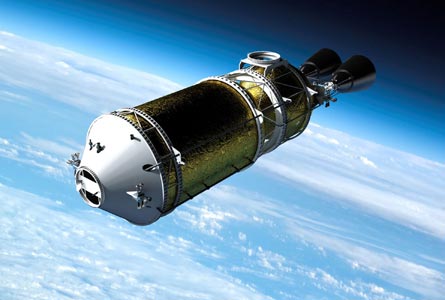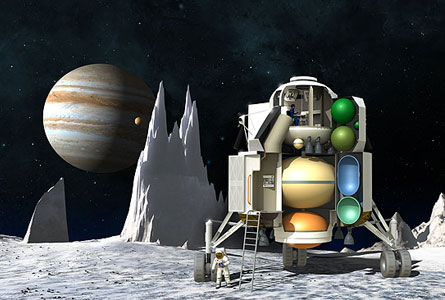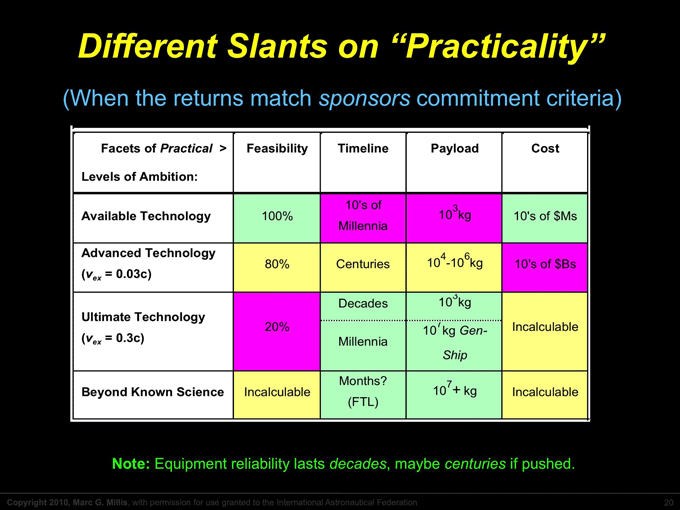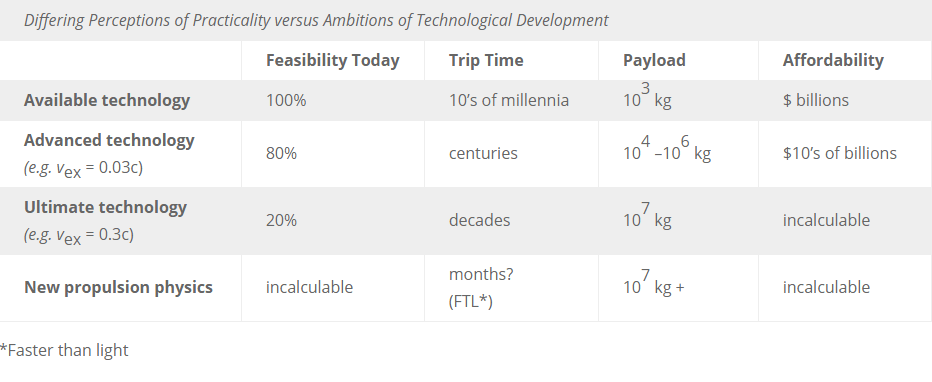Motives and Perceptions
There is no single “best” starship concept. Although many researchers have their favorite, the “best” depends on one’s perception and motives. Often these priorities go unmentioned as if assuming they are shared by all. To improve future decisions, the span of motives and perceptions is explicitly explored, and includes:
- Implicit Motivations
- Perceptions of Practicality
- Interstellar Procrastinations
- Ancillary Developments

“The most erroneous stories are those we think we know best – and therefore never scrutinize or question.”
~ Stephen Jay Gould
Motives
Depending on one’s perception and motives, there is more than one ‘ideal’ starship. So far, many of these underlying perspectives have not been explicitly stated and, thus, will impede fair comparisons and next-step decisions. To improve future decisions, the span of motives and perceptions is explicitly examined here.
As much as continuing advances in science and technology will make it easier to launch an interstellar mission, these advances also create a quandary, the incessant obsolescence postulate: no matter when an interstellar probe is launched, a subsequent probe will reach the destination sooner and with more modern equipment. This is only a postulate, not a theorem nor even a principle. It is presented here not as an immutable constraint, but as one of the impediments to interstellar missions. Although this incessant obsolescence postulate appears valid, it will eventually expire.
Due to the combination of the nonlinear nature of both advancement trends and relativistic spaceflight, there will be a point when waiting longer does not get you to the destination sooner. (See this article regarding Barnard’s Star and the “Wait Equation”). In addition to the eventual expiration of incessant obsolescence, there are other conditions that will make this postulate collapse, such as:

- Multiple missions and destinations
- Trip time becomes irrelevant:
- Colony ships without destinations
- Human lifespan increases dramatically
- Societal attention span increases dramatically
- Significantly closer destinations become available (reduces trip time)
- The pace of technological development or energy production dramatically slows (societal retardation)
- Propulsion physics breakthroughs are achieved (reducing trip times)
- Motivations other than first-to-destination drive mission planning.
Implicit Motivations
The most significant factor that negates the incessant obsolescence postulate is motivation. The incessant obsolescence postulate is only a limitation when the motivation is to reach the destination first – as if interstellar flight were a race. Instead, for example, if the motivation is to depart the Earth the earliest, then the incessant obsolescence postulate is irrelevant. If the goal is to stimulate technological developments, then launching soon and frequently is more prudent. If the purpose is to provide humanity with an alternate survival strategy, then the focus would be toward building a colony ship, where flight time is irrelevant. To reflect the consequences of differing motivations, the table below is offered. These are listed explicitly to help readers assess if their own perceptions are being affected by implicit motivations.
| Comparing Interstellar Motivations & Actions | |
| Motivations | Consequences |
| Being first: conquest of space | Stymied by the incessant obsolescence postulate |
| Human survival beyond the habitability of Earth | Priority on self-sustaining, multi-generation colonies beyond Earth |
| Human expansion: finding and settling other habitable worlds | Look first for nearest habitable worlds Develop all the technologies needed to send a colony there |
| Nearer-term gains, seeking investment returns within tolerable durations | Pursue relevant science & technology, with an eye toward harvesting benefits during that progress. |
| Intellectual stimulation & progress in science, technology, and education | Pursue discretionary interests with discretionary resources. Implies that a multiplicity of interests and approaches exist. |
Perceptions of Practicality
In addition to the influence of motivations, there is also an effect from perceptions of practicality – perceptions which can be implicit and thus unknowingly affect decisions. Practical is a relative term depending on one’s priorities and biases. To some “practical” means choosing the most affordable approach, regardless of how long it takes to reach another star system. To others, star ships are not practical unless they are generation ships, and to still others, star flight won’t be practical until it is as simple as envisioned in science fiction. This table presents how these differing priorities map to different levels of technological ambition. From this it is hoped that the motivations to pursue specific technological ambitions become more explicit. Note: the values within this table are provisional estimates for illustrative comparisons, rather than verified values.


